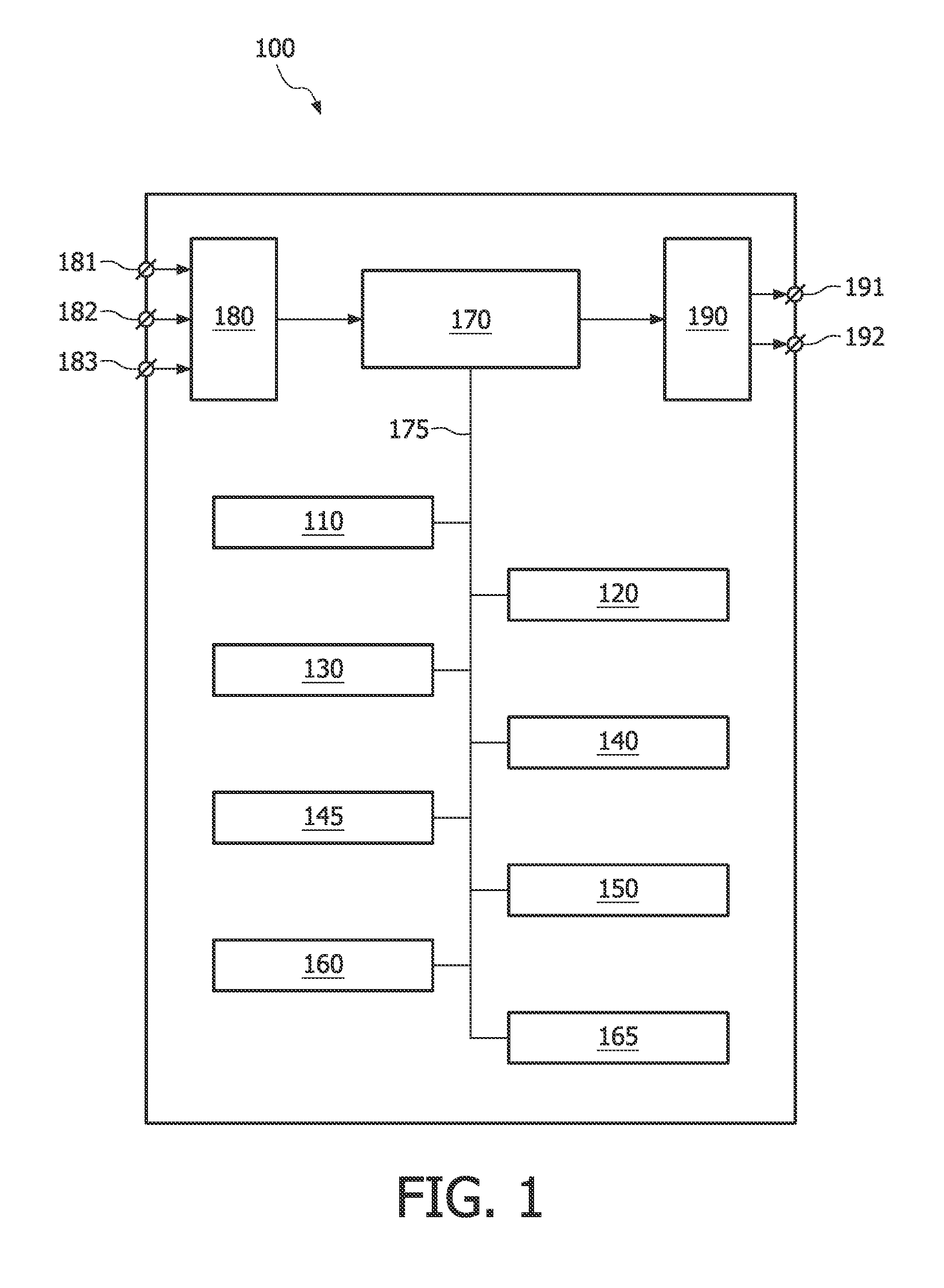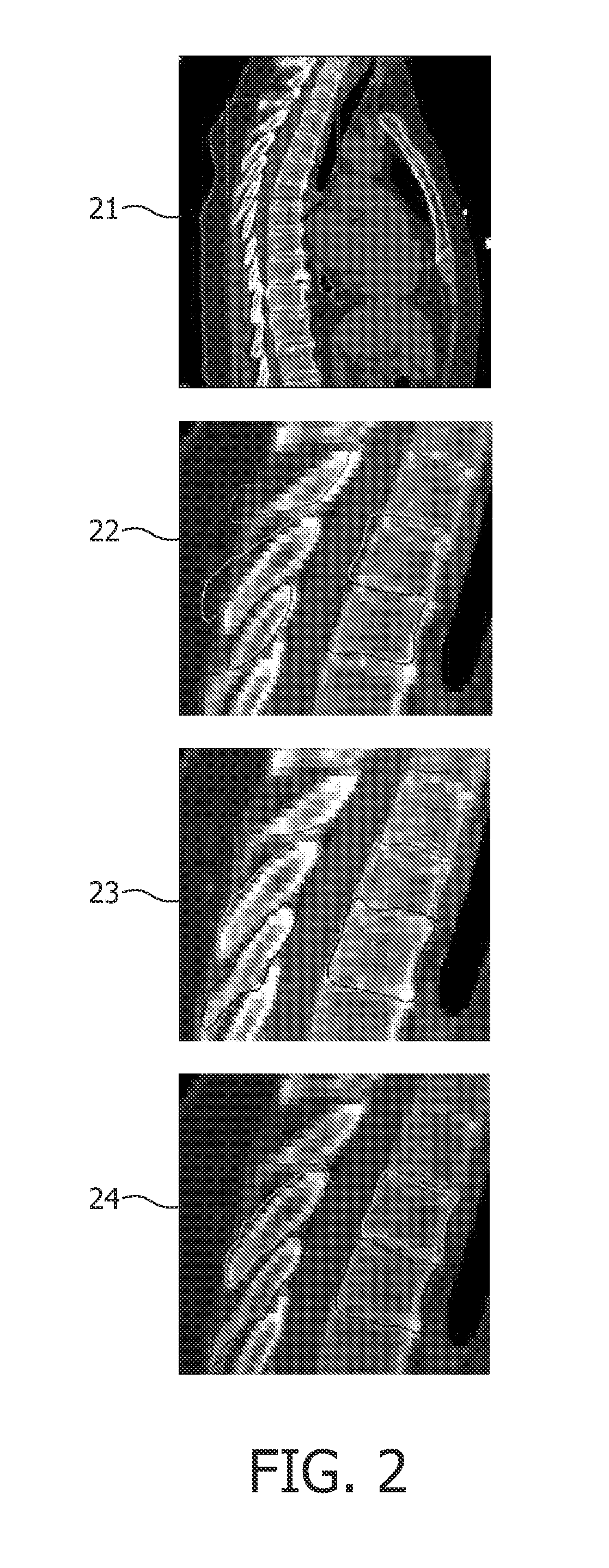Simultaneous model-based segmentation of objects satisfying pre-defined spatial relationships
a model-based and object-based technology, applied in the field of image segmentation, can solve problems such as wrong adaptation
- Summary
- Abstract
- Description
- Claims
- Application Information
AI Technical Summary
Benefits of technology
Problems solved by technology
Method used
Image
Examples
Embodiment Construction
[0039]FIG. 1 schematically shows a block diagram of an exemplary embodiment of the system 100 for segmenting a plurality of objects in image data using simultaneous model-based image segmentation, the system comprising:
[0040]a pre-positioning unit 110 for pre-positioning a first mesh for segmenting a first object of the plurality of objects, thereby initializing a first mesh current position, and for pre-positioning a second mesh for segmenting a second object of the plurality of objects, thereby initializing a second mesh current position;
[0041]a connection unit 120 for defining a plurality of connecting edges for connecting first end vertices to second end vertices, wherein the first and second end vertices are selected from vertices of the first and second mesh, respectively;
[0042]a feature unit 130 for identifying first features in the image data for computing an external energy of the first mesh on the basis of the first mesh current position, and for identifying second feature...
PUM
 Login to View More
Login to View More Abstract
Description
Claims
Application Information
 Login to View More
Login to View More - R&D
- Intellectual Property
- Life Sciences
- Materials
- Tech Scout
- Unparalleled Data Quality
- Higher Quality Content
- 60% Fewer Hallucinations
Browse by: Latest US Patents, China's latest patents, Technical Efficacy Thesaurus, Application Domain, Technology Topic, Popular Technical Reports.
© 2025 PatSnap. All rights reserved.Legal|Privacy policy|Modern Slavery Act Transparency Statement|Sitemap|About US| Contact US: help@patsnap.com



